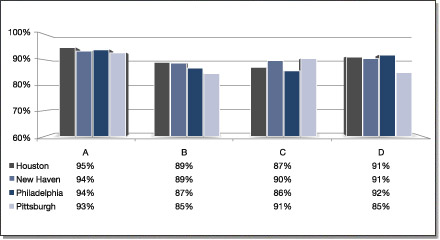Content

On the other hand, if a business can achieve a positive economic profit, it indicates the individual should pursue the current business operation as it yields better returns than other opportunities. Accounting profit corresponds to the profit a firm declares on its financial accounts each period, whereas normal profit and economic profit are economic terms. When measuring the normal profit of a company, we consider the opportunity cost of using the resources elsewhere. If a company reports a normal profit, it means that the compensation it receives for remaining in business is higher than the opportunity cost that it loses by using the resources to produce goods. However, a company is said to incur losses if its compensation is lower than the opportunity cost lost to produce goods.
A similar yet inverse case can be said to apply in cases of economic loss. In theory, conditions of economic loss within an industry will drive companies to begin leaving that industry. Eventually, competition will be sufficiently reduced so as to allow the remaining companies within the industry to move toward and potentially achieve a normal profit. Economic profit is the profit an entity achieves after accounting for both explicit and implicit costs. Then, plug your revenue and costs into the above formula to find your accounting profit.
Supernormal profit formula/ Economic profit formula
Virginia’s firm is now in a condition of normal profit, indicating it is still competitive in the flower shop market, with zero economic profit. Her total explicit expenses are $150,000, which is $30,000 + $40,000 + $80,000. Virginia now calculates her annual implicit expenses to be $20,000, mostly consisting of the earnings she foregone by utilizing part of her business as a personal studio rather than renting it out. It is an essential economic phrase that organizations and firms use to measure how competitive they are in their industry. To determine whether a firm is making a regular profit, you’ll need to know the formula and what it implies for the industry.
Implicit costs, also known as opportunity costs, are costs that will influence economic and normal profit. When substantial implicit costs are involved, normal profit can be considered the minimum amount of earnings needed to justify an enterprise. Unlike accounting profit, normal profit and economic profit take into consideration implicit or opportunity costs of a particular enterprise.
Limitations of Economic Profit
In Figure 1(c), the market price has fallen still further to $2.00 for a pack of frozen raspberries. At this price, marginal revenue intersects marginal cost at a quantity of 65. The farm’s total revenue at this price will be shown by the large shaded rectangle from the origin over to a quantity of 65 packs (the base) up to point E” (the height), over to the price of $2, and back to the origin. The average cost of producing 65 packs is shown by Point C” which shows the average cost of producing 65 packs is about $2.73.
Economic profit is positive when the compensation earned is greater than the normal profit, and it creates an incentive for other companies to enter the market. It is also important to consider that implicit cost is an important element of normal profit calculations but is also one that is estimated and difficult to determine with accuracy. The amount of total revenue that exceeds the total cost can be defined as the supernormal profit (or abnormal/ economic profit) for a particular business organization. The economic loss to you would be negative $30,000 for the first year ($100,000 of revenue minus $80,000 of start-up costs minus $50,000 of lost income). You might decide to go ahead with this plan, though, if there are no other start-up costs after year one, your ongoing expenses significantly drop, and your revenue increases. In the Simple Average Profit Method, normal profits are earned by the business for a specified number of years.
- Your economic profit can vary depending on economic principles and opportunities.
- Such laws are meant to prevent large and well established companies from using their foothold in the market to reduce prices and drive out new competition.
- Calculating accounting profit is a little more straightforward than computing economic profit.
- On the contrary, if the amount is lesser (negative value) than zero, then this is a state of economic loss.
- This amount of money is the opportunity cost of your savings, which doesn’t matter when computing accounting profit but is essential when working out the economic profit.
The same concept applies to buying or renting a home and investing money. Considering economic profit or loss can help you make better long-term financial decisions. In contrast, normal profit formula the economic profit is negative, indicating that the individual could be financially better off by halting the current business operation and engaging in a different opportunity.
Premium Investing Services
Regulators don’t require economic profit to be calculated or disclosed, but understanding how it works can shed light on the decisions a management team makes, plus confer some lessons in personal finance. Another significant factor for profit maximization is market fractionation. Profit is maximized by treating each location as a separate market.[21] Rather than matching supply and demand for the entire company the matching is done within each market.

Here explicit cost means the directly ascertainable cost spent on account of running a business, i.e. rent on land and building, the wages of labor, salary for employees, interest on capital invested, etc. Once new companies enter the market, there will be an increase in the supply of commodities. It will cause a significant decline in product prices, and in the long term, the economic profit will be zero. On it, you notice you have $40,000 in revenue, $9,000 in total expenses, and $6,000 in costs of goods sold.You deduct $15,000 ($9,000 + $6,000) from $40,000 to get your net income, or your accounting profit.
Supernormal profit in perfect competition
Calculate the company’s economic profit if the implicit costs are $30,000. Normal profit is a profit metric that takes into consideration both explicit and implicit costs. Normal profit occurs when the difference between a company’s total revenue and combined explicit and implicit costs are equal to zero. However, if total revenues exceed total cost then the firm is said to be making supernormal profits. Profits encourage firms to be more competitive, reward entrepreneurs and allow better distribution of scarce resources.

Although normal profit equals to zero, it does not mean that the company is making zero profits. Rather, it compares how well the company utilizes its resources to generate revenues. With economic profit, you look at revenue, explicit costs, and implicit costs. Unlike accounting profit, economic profit includes the opportunity costs for taking one course of action versus another.
According to theory, if an industry loses money, companies will begin to quit. In macroeconomics, the word normal profit can apply to economic sectors larger than a single firm. It can relate to an entire industry or market in complement to a single firm, as in the example above. This method evaluates the opportunity cost of deploying the assets elsewhere when calculating a company’s regular profit.
On the other hand, in economics, you might have heard the term economic profit, which is nothing but the amount left over after deducting all implicit and explicit costs. If the market price that a perfectly competitive firm receives leads it to produce at a quantity where the price is greater than average cost, the firm will earn profits. If the price the firm receives causes it to produce at a quantity where price equals average cost, which occurs at the minimum point of the AC curve, then the firm earns zero profits. Finally, if the price the firm receives leads it to produce at a quantity where the price is less than average cost, the firm will earn losses. Remember that the area of a rectangle is equal to its base multiplied by its height. The average cost of producing 85 packs is shown by point C’ or about $3.50.
Economic profit can be calculated by subtracting the opportunity cost from the accounting profit. When we talk about profit in a company it is normally accounting profit. If we thus make the statement that our firm has made a profit, we are referring to an accounting profit. In (b), price intersects marginal cost at the minimum point of the average cost curve. Normal profit describes a situation in which a company’s total revenues match its total costs. Accounting profit is the difference between the total revenue and the total costs of a business in a single period, such as a fiscal year.
The same principle can be used in other ways when deciding how to spend or invest your money. Perhaps you have a choice between buying a new car with a warranty or a used car with no warranty. The new car has a higher up-front expense but lower maintenance expenses for a time, while the used car has a lower up-front purchase price but higher maintenance expenses.
Salary income handed up to manage a firm or investment gains passed up from investing at one predicted rate of return vs. another are two instances of implied expenses that are utilized in calculating normal profit. David now has a $10,000 economic profit, indicating that his firm is profitable and performing well in its current market. If he maintains a positive economic profit, it may encourage competitors, resulting in a return to normal profit for his firm. His entire explicit costs are $180,000, which is $40,000 + $50,000 + $20,000 + $70,000. David then calculates that his hidden annual expenses are $10,000 from the job he turned down that might have paid him $10,000 more. Furthermore, economic profit can be a helpful indicator for determining the overall status of profits in a specific industry.
Like with accounting profit, you can also find totals by looking at your income statement. It’s easy to see how the implicit cost may change your decision about opening your business. If a company offers you an hourly wage of 300 dollars instead of 100, you may decide not to set up the business and instead continue working as a programmer. A company needs to decide what they are going to invest in or what it will produce. The company invests at the same time in different things and that will determine their profit.


